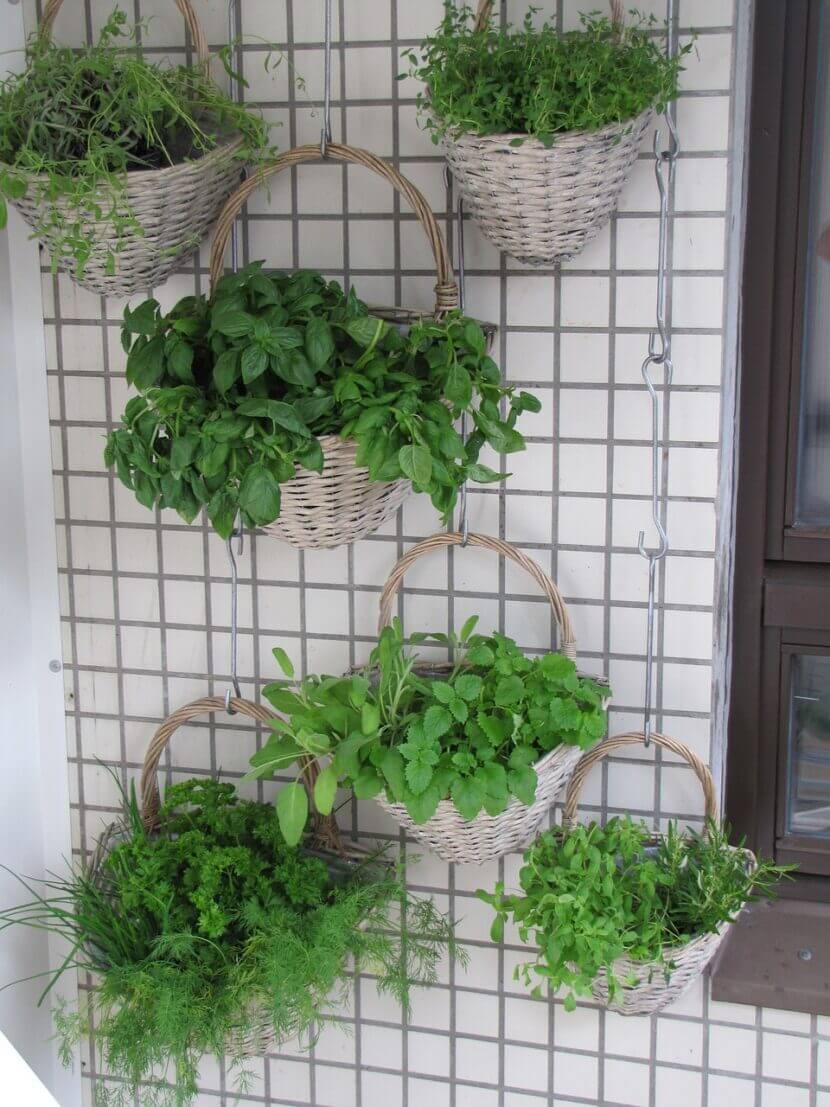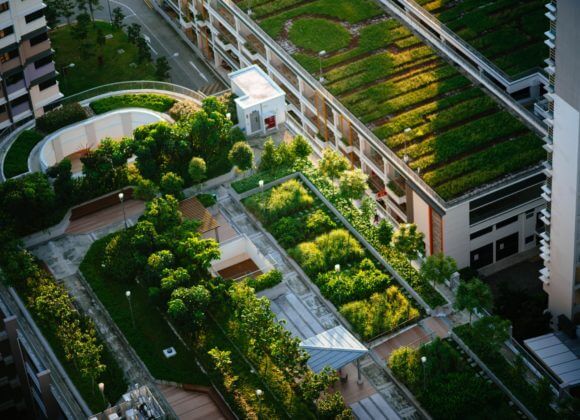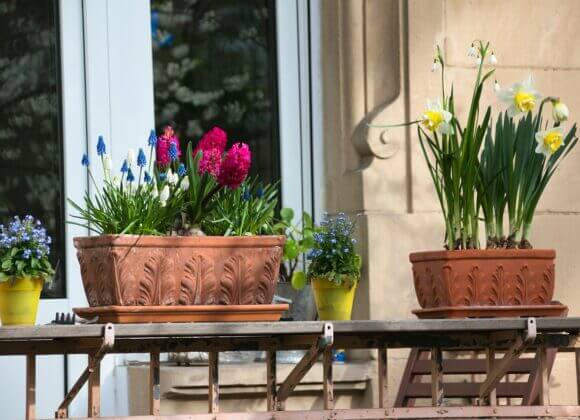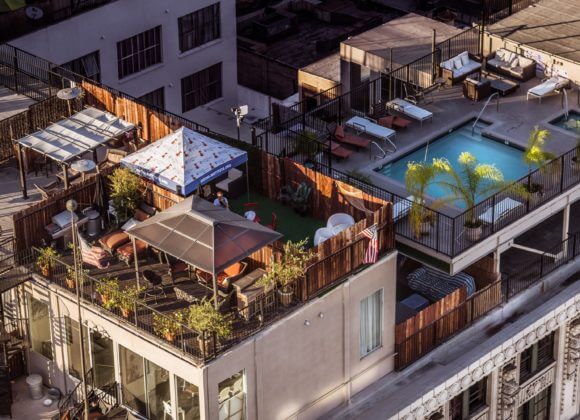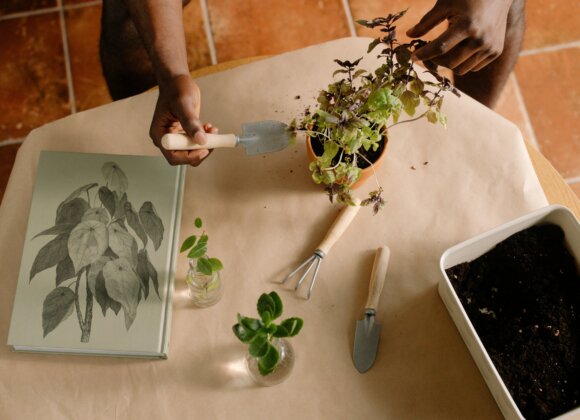Vegetable garden on the balcony
A garden is not necessarily a prerequisite for harvesting fresh fruit and vegetables. Balconies and roof terraces are also suitable for gardening and – under optimal conditions – produce rich harvests. Garden expert Katja Batakovic from “Natur im Garten” knows what is important.
#1: Observe light and wind conditions
Anyone who thinks that a south or west-facing balcony is a guarantee of good yields is mistaken. This is because balconies facing in these directions represent a lot of heat, says Katja Batakovic. “But not every plant species likes full sun and extreme heat.” This applies to lettuce and spinach, for example, which tend to bolt under these conditions. If you love them but don’t have an east-facing balcony, you can still help yourself. “You can grow them in the shade of taller plants, for example,” advises Batakovic. But it’s not just the sun and heat that affect some plants, the same applies to wind: if this is often felt on the balcony, hobby gardeners should opt for small-leaved plants to prevent the wind from tearing the leaves.
#2: How much space does the vegetable garden need?
Not all plants are suitable for the vegetable garden on the balcony. These include varieties that grow very tall, such as maize, or deep-rooted plants such as sweet potatoes and artichokes. Raspberry or gooseberry bushes also tend to need more space than is available on balconies. Lettuce, tomatoes, radishes, peppers and cucumbers, as well as edible flowers and herbs, feel at home not only in the vegetable patch, but also in pots and balcony boxes.
#3: Larger containers instead of small pots
Every plant needs a certain amount of space for its roots – to enable stately growth and a rich harvest, the pots and balcony boxes should therefore be appropriately sized. However, the fact that the roots have enough space is only one advantage of larger containers: Another is the fact that they are better able to compensate for temperature differences – and don’t need to be watered as often. By the way: Each plant does not have to have its own container. This is because most plants thrive in the company of others – for example, tomatoes and basil or kale and bush tomatoes. It is also important for the success of a mixed crop in the vegetable garden that the plants have similar nutrient and fertilizer requirements.
#4: vertical gardening – thinking upwards
A table, armchair or perhaps even a garden lounger further restrict the available space on the balcony. After all, this should not only serve as a vegetable garden, but also as a place to relax. Batakovic advises hobby gardeners to include vertical gardening in their considerations in order to increase yields. Special vertical beds that are inclined forwards, a shelf with sufficient space between the individual levels or a grid in which flower boxes are hung make it possible to use the space above. Simple cords attached between plants standing on the ground and a hanging shelf, for example, also work well. “You can grow climbing plants such as mini kiwis on them,” says Batakovic. However, if you opt for vertical gardening, you should make sure that plants growing upwards have enough space at the top. On the other hand, care must be taken to ensure that any sun worshippers are not shaded too much by downward-hanging roommates.
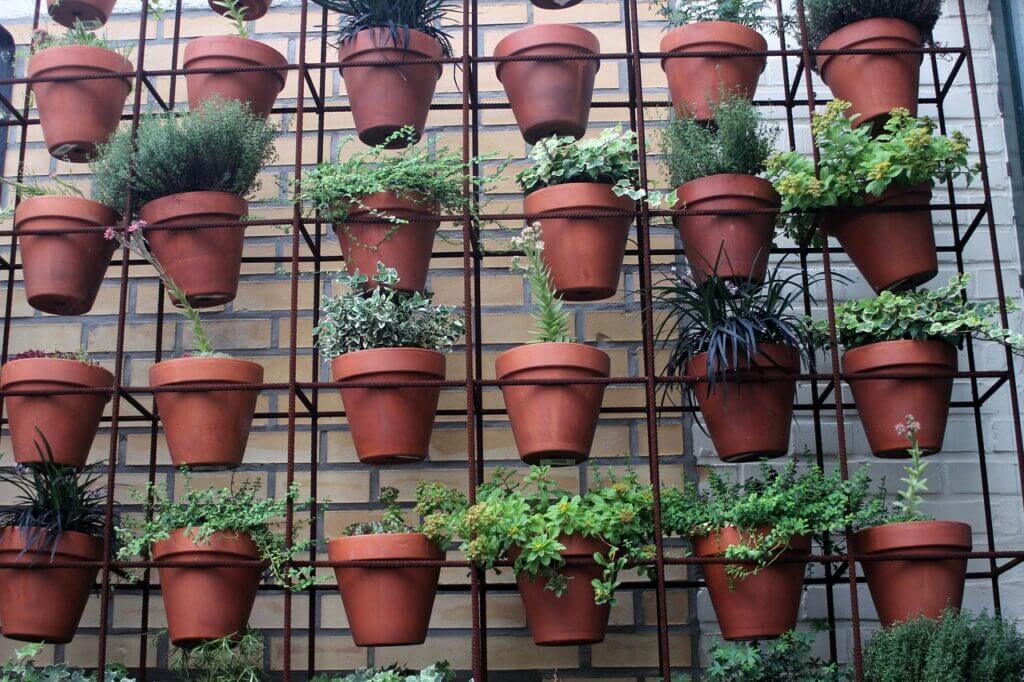
#5: Plan the vegetable garden for the whole season
In order to be able to harvest as many balcony vegetables as possible, it is advisable to use the balcony throughout the season. Get an overview of which varieties can be planted and harvested when so that you can fill gaps as quickly as possible after the harvest. Another solution is offered by varieties that allow multiple harvests, as is the case with lettuce or strawberries.
#6: Show consideration
Plants need to be watered regularly in order to thrive. However, water must be prevented from running onto the balcony below. Yellow leaves, faded flowers and the like should not simply be thrown down. Caution is also required if flower boxes are hanging on the outside of the balcony or pots are standing on the railing – a fall, for example in strong winds, must be avoided at all costs. If you are a tenant, you should obtain the owner’s consent in these cases – after all, there are liability issues involved if one of the boxes should fall and cause damage. The owner’s OK is also required if the façade has to be drilled into for the installation of shelves, hanging baskets or flower boxes. Balconies and terraces are generally part of the rental property and tenants are therefore free to use them – however, this must not jeopardize the fabric of the building or the interests of the owner.
Related posts:


